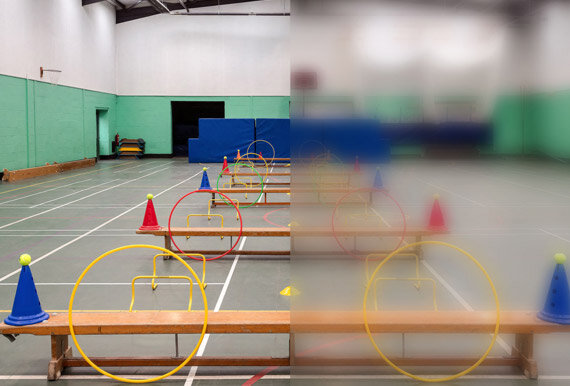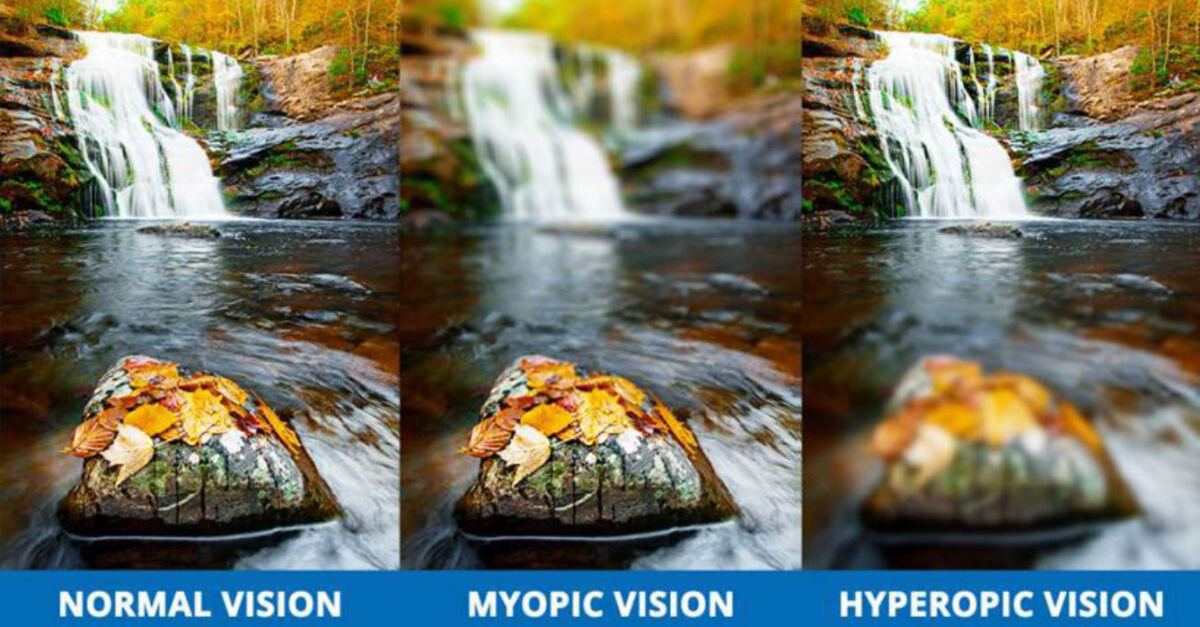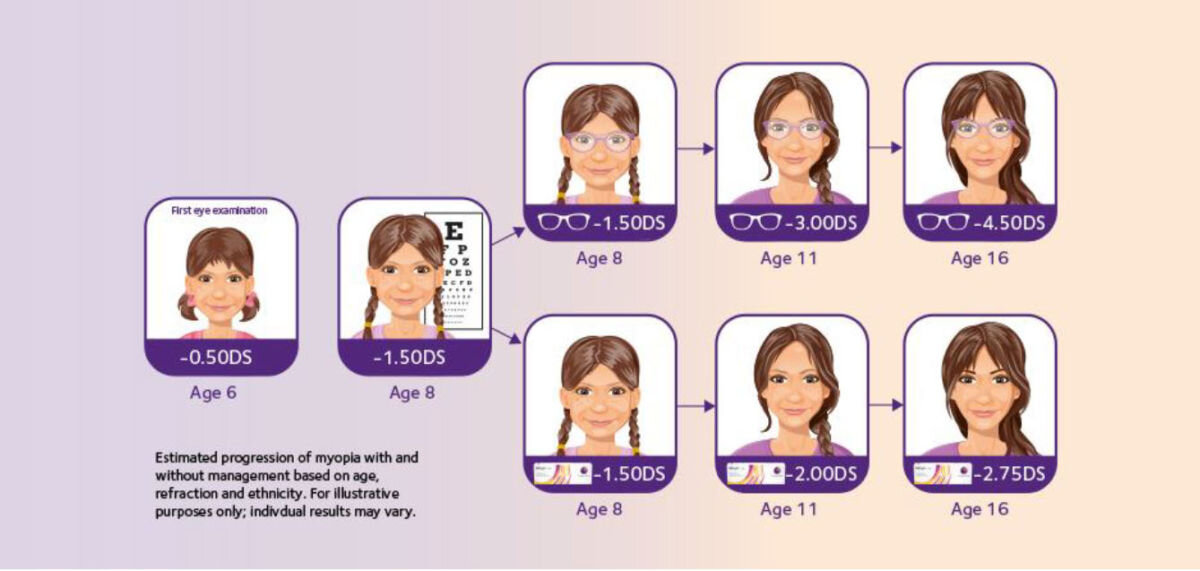Unlocking Clarity: Strategies to Prevent Myopia Progression
What is myopia (short-sightedness) and can we help stop its progression?
Patients often get confused between short and long-sightedness. Not surprising really as the terminology is confusing. So here are the facts:
Short sight (nearsightedness) is myopia – myopia is the terminology most optometrists use.
Long sight (farsightedness) is hyperopia (hypermetropia) – hyperopia is the terminology most optometrists use
Myopia – generally, things are blurry in the distance without vision correction and fairly good close to. The more myopic the person the closer something will have to be held to the eye in order to see at near (this is the focal length). Myopia uses minus lenses (concave) to correct the vision, this makes the eye look a little smaller behind the lens. Myopia is PROGRESSIVE and usually worsens with age as the eye grows. This growth slows significantly as the person stops growing in early adulthood.
Hyperopia – approximately 8 in 10 babies are born hyperopic – you are born hyperopic – it isn’t progressive like myopia. Most children outgrow hyperopia and will not need spectacles. Those people who require correction need plus lenses (convex); this makes the eye look a little bigger behind the lens.*
There is an interesting video here is you want to know more:
https://www.youtube.com/watch?v=VylT0_o89jQ
Myopic patients reading this will probably remember visiting the optician when they were younger and each time the prescription become progressively stronger, and the spectacle lenses a little thicker. In short, this is basically the eye growing as the rest of the body grows. Genetics play a big part. If both parents are myopic then their child is 6 times more likely to be myopic too and if one parent is myopic the likelihood is 3 times more.
We know that myopia is on the rise. Interestingly in Singapore, according to the Ministry of Health, 83% of young adults are now myopic and this percentage is increasing. There is also early research suggesting there may also be a peak in global myopic trends termed “quarantine myopia” due to children having less exercise for their eyes (basically varying their vision from far to near, rather than looking at one fixed point for long periods of time).
But what’s the big deal? The person needs a stronger spectacle correction…it’s not the end of the world. Well, this is where it becomes interesting.
Suppose the eye is bigger as it has continued to grow due to unchecked myopia. In that case, the patient is more at risk of retinal detachment, glaucoma and myopic macular degeneration later in life. The concave minus lenses to correct myopia are heavier, less attractive and ultimately more expensive than the more aesthetically pleasing options. Plus, if you are having to changes the lenses more frequently as myopia is initially progressive then this can also be costly.
For some time now, soft daily MiSight contact lenses have been available to slow myopic progression and have been very successful. The earlier, the better for these lenses; even 8-year-olds in practice are starting to wear them. One in four children who wear these lenses experience no myopic change over six years, and overall, 60% of patients recorded slowing of myopic progression. This is amazing.
This month Hoya’s MiyoSmart lenses were launched in the UK. These are innovative spectacle lenses for myopia control. MiyoSmart is proven to curb myopia progression in children (age 8-13) by 60% with its award-winning D.I.M.S. (Defocus Incorporated Multiple Segments) technology. This provides us with another effective solution for treating increasing myopia, alongside existing daily contact lenses. If you are concerned about progressive myopia, please get in touch to make an appointment.
I hope this blog post has been of interest and I look forward to welcoming you in practice again soon.
Lucinda
*The information presented here reflects general trends in myopia and hyperopia but of course there are always exceptions to these.
Have you discovered our other blogs?
-
2025
- Nov 4, 2025 Understanding the Impact of Blue Light on Eye Health Nov 4, 2025
- Oct 7, 2025 Clear Vision for Padel: Sportswear Spectacles Under Fluorescent Lights Oct 7, 2025
- Sep 18, 2025 Enhancing Road Safety Through Clear Vision Sep 18, 2025
- Aug 21, 2025 Cataract Surgery & Lens Replacement Explained Aug 21, 2025
- Jul 31, 2025 The Link Between Sleep and Eye Health: What You Should Know Jul 31, 2025
- Jul 8, 2025 Advanced Eye Care for Macular Degeneration & Glaucoma Jul 8, 2025
- Jun 4, 2025 Diabetes and Pre-Diabetes: Essential Eye Health Information Jun 4, 2025
- May 20, 2025 Protect Your Vision: Avoid These Harmful Eye Health Habits May 20, 2025
- Apr 15, 2025 Spring eye care: Protecting and prioritising your vision Apr 15, 2025
- Mar 18, 2025 Pro Tips for Proper Eyewear Care Mar 18, 2025
- Feb 18, 2025 Night Driving and Vision: Key Challenges and Solutions Feb 18, 2025
- Jan 16, 2025 Understanding different types of spectacle lenses Jan 16, 2025
-
2024
- Oct 31, 2024 Diabetic Eye Disease Month: The Power of Pre-Diabetes Checks Oct 31, 2024
- Sep 19, 2024 Exciting Developments in Ocular Science Sep 19, 2024
- Aug 20, 2024 The Benefits of UV Protection for Your Eyes Aug 20, 2024
- Aug 1, 2024 Tips for Maintaining Healthy Vision as You Age Aug 1, 2024
- Jul 4, 2024 The link between nutrition and eye health Jul 4, 2024
- Jun 12, 2024 How to Relieve Digital Eye Strain Jun 12, 2024
- May 16, 2024 Exploring Menopause's Impact on Eye Health May 16, 2024
- Apr 18, 2024 The Importance of Regular Eye Exams for Optimal Vision Health Apr 18, 2024
-
2023
- Dec 14, 2023 Understanding Macular Degeneration: A Guide to Age-Related Vision Changes Dec 14, 2023
- Nov 21, 2023 Adaptive Vision: Unveiling the Wonders of Photochromic Lenses Nov 21, 2023
- Oct 26, 2023 Transform Your Look Safely with Costume Contact Lenses! Oct 26, 2023
- Sep 28, 2023 Cutler and Gross - 50 years of style Sep 28, 2023
- Aug 8, 2023 AI Revolutionizing Optometry Care Aug 8, 2023
- Jul 11, 2023 Unlocking the Power of Optomap Scanning Jul 11, 2023
- Jun 6, 2023 Discover the Benefits of Polarized Sunglasses Jun 6, 2023
- May 11, 2023 Understanding Dry Eye (Keratoconjunctivitis Sicca) May 11, 2023
- Apr 25, 2023 Case Study: Understanding the Impact of a Retinal Tear Apr 25, 2023
- Mar 21, 2023 Ocular Hypertension: A Case Study Mar 21, 2023
- Feb 28, 2023 Unveiling the Process of Cataract Formation Feb 28, 2023
- Jan 4, 2023 Case Study: TIA (Mini-Stroke) Jan 4, 2023
-
2022
- Dec 21, 2022 Tips for Winter Eye Care Dec 21, 2022
- Nov 24, 2022 Advice for soft contact lens wear Nov 24, 2022
- Oct 25, 2022 Understanding Eye Floaters: Causes, Symptoms, & Treatment Options Oct 25, 2022
- Sep 22, 2022 Hormonal Impact on Eye Health during Menopause Sep 22, 2022
- Aug 16, 2022 Arcus Senilis (corneal arcus) – What is it? Aug 16, 2022
- Jul 28, 2022 Managing Photophobia: Tips for Light Sensitivity Jul 28, 2022
- Jun 23, 2022 Why do you need longer arms as you grow older? Jun 23, 2022
- May 19, 2022 Best Practices for Contact Lens Wear & Care May 19, 2022
- May 19, 2022 Dive Into Clarity: Discover Prescription Swimming Goggles May 19, 2022
- Apr 21, 2022 The Next Exciting Step in Eye Care - Optomap Apr 21, 2022
- Feb 15, 2022 Unraveling the mystery of human crying Feb 15, 2022
-
2021
- Dec 2, 2021 Ready Readers vs Prescription Lenses: A Comprehensive Guide Dec 2, 2021
- Nov 2, 2021 How to clean your micro fibre lens cloth Nov 2, 2021
- Oct 5, 2021 8 Tips for Protecting Your Eyes & Keeping Them Healthy Oct 5, 2021
- Sep 7, 2021 Unlocking the Mysteries of Astigmatism Sep 7, 2021
- Jul 20, 2021 Cataract: Unveiling the facts, symptoms & treatment Jul 20, 2021
- Jun 3, 2021 OCT as standard on all eye tests Jun 3, 2021
- May 14, 2021 Unlocking Clarity: Strategies to Prevent Myopia Progression May 14, 2021
- Apr 1, 2021 Understanding the science of Blue Light-Blocking Lenses Apr 1, 2021
- Mar 22, 2021 Embrace the Brighter Days: Celebrating an Iconic British Brand This March Mar 22, 2021
- Feb 22, 2021 Combat Dry Eye and Allergies: Expert Solutions for Relief and Comfort Feb 22, 2021
- Jan 21, 2021 What Is Screen Fatigue? Jan 21, 2021
-
2020
- Dec 22, 2020 Polarised Lenses – The Most Effective Way to Reduce UV Radiation Dec 22, 2020
- Nov 24, 2020 Protect Against Dry Eyes in Cold Weather Nov 24, 2020
- Oct 19, 2020 DVLA Driving Standards – The Clear Facts Oct 19, 2020
- Sep 16, 2020 The Delight of Multifocal Contact Lenses Sep 16, 2020
- Jul 15, 2020 Night Driving – Can anything help to reduce glare? Jul 15, 2020






